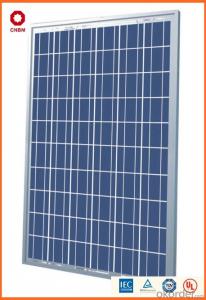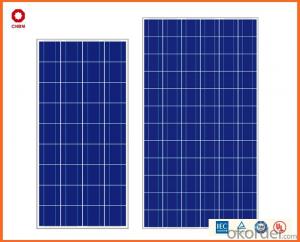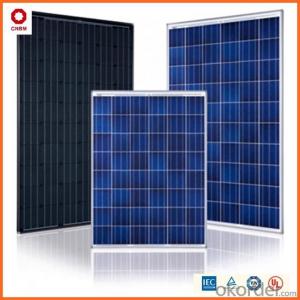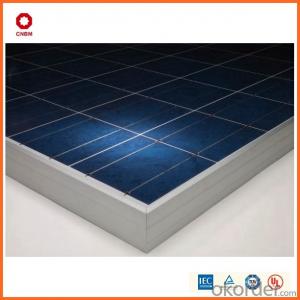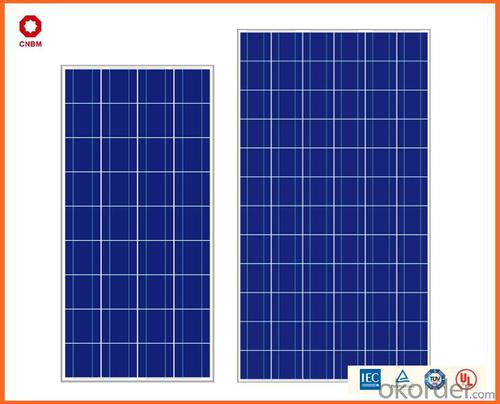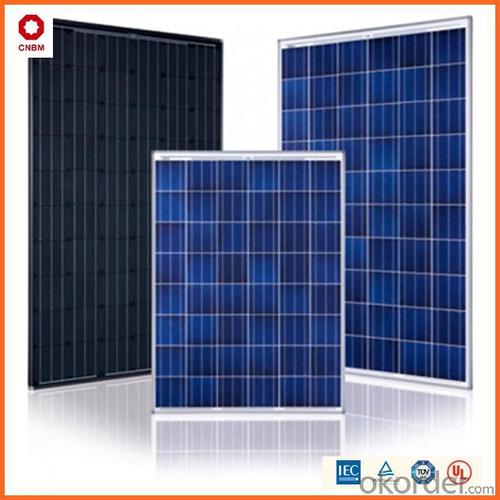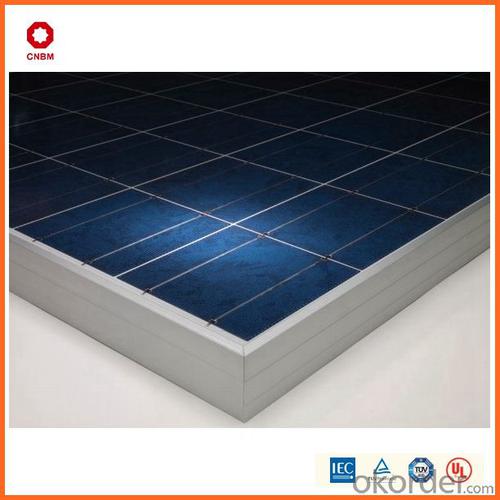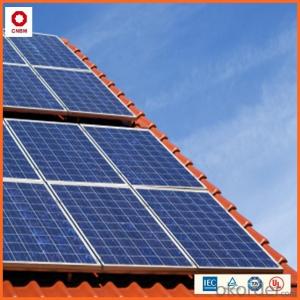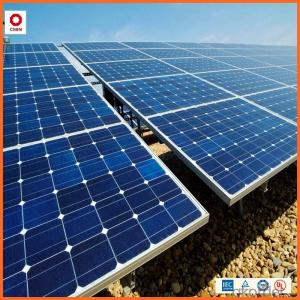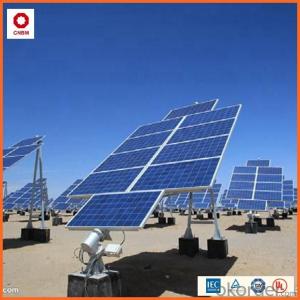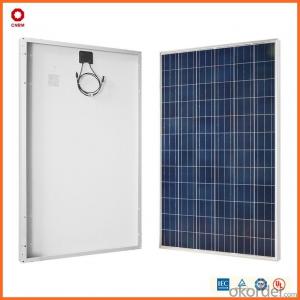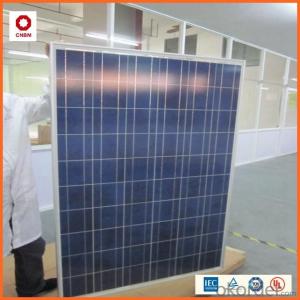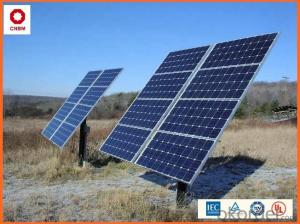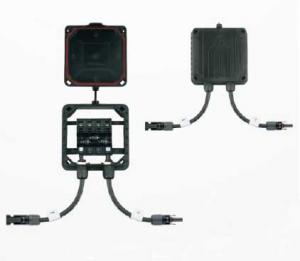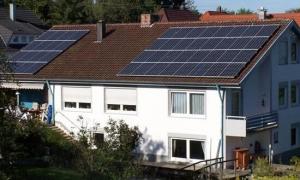Solar Energy Systems:!!! Hot on Sale!!! Stock 265W Poly Solar Panel USD0.45/W A Grade Good Solar Panel
- Loading Port:
- China main port
- Payment Terms:
- TT OR LC
- Min Order Qty:
- 1 watt
- Supply Capability:
- 10000000 watt/month
OKorder Service Pledge
OKorder Financial Service
You Might Also Like
Product Description:
Hot Sale !!! Quality and Safety of 245w-320w Poly Solar Panel
1. Rigorous quality control meets the highest international standards.
2. High-transmissivity low-iron tempered glass, strong aluminium frame.
3. Using UV-resistant silicon.
4. IS09001/14001/CE/TUV/UL
Warranties of 245w-320w Poly Solar Panel
1. 10 years limited product warranty
2. 15 years at 90% of the minimal rated power output
3. 25 years at 80% of the minimal rated power output
Technical date of 245w-320w Poly Solar Panel
ITEM NO.: | Mono 125*125 cell ,36pcs . Power range from 80Wp-100Wp | ||||||||
Maximum Power(W) | 80 | 85 | 90 | 95 | 100 | ||||
Optimum Power Voltage(Vmp) | 17.81 | 17.89 | 17.94 | 17.99 | 18.06 | ||||
Optimum Operatige Current(Imp) | 4.78 | 4.91 | 5.12 | 5.35 | 5.59 | ||||
Open Circuit Voltage(Voc) | 21.98 | 22.05 | 22.14 | 22.28 | 22.45 | ||||
Short Circuit Current(Isc) | 4.95 | 5.15 | 5.36 | 5.65 | 5.84 | ||||
Solar Cell: | 125*125 Mono | ||||||||
Number of Cell(pcs) | 4*9 | ||||||||
Brand Name of Solar Cells | JA Cell, Bluesun Cell | ||||||||
Size of Module(mm) | 1580*808*35 | ||||||||
Caple & Connector Type | Pass the TUV Certificate | ||||||||
Frame(Material Corners,etc.) | Aluminium-alloy | ||||||||
Backing (Brand Type) | TPT | ||||||||
Cell Efficiency for 100W(%) | 15.8% | ||||||||
Weight Per Piece(KG) | 12.0KG | ||||||||
FF (%) | 70-76% | ||||||||
Junction Box Type | Pass the TUV Certificate | ||||||||
Tolerance Wattage(e.g.+/-5%) | ±3%, or 0-3% | ||||||||
Front Glass Thikness(mm) | 3.2 | ||||||||
Temperature Coefficients of Isc(%) | +0.04 | ||||||||
Temperature Coefficients of Voc(%) | -0.38 | ||||||||
Temperature Coefficients of Pm(%) | -0.47 | ||||||||
Temperature Coefficients of Im(%) | +0.04 | ||||||||
Temperature Coefficients of Vm(%) | -0.38 | ||||||||
Temperature Range | -40°C to +85°C | ||||||||
Surface Maximum Load Capacity | 2400Pa | ||||||||
Allowable Hail Load | 23m/s ,7.53g | ||||||||
Bypass Diode Rating(A) | 12 | ||||||||
Warranty | 90% of 10 years,80% of 25 years. | ||||||||
Standard Test Conditions | AM1.5 1000W/ 25 +/-2°C | ||||||||
Packing | carton or pallet | ||||||||
1*20' | 25 Pallets / 450pcs | ||||||||
1*40'STD | 25 Pallets / 100pcs | ||||||||
Features of our products:
• High conversion efficiency mono/poly-crystalline amorphous silicon solar cells
• Modules incorporate high performance bypass diodes to minimize the power drop caused by shading
• High transmittance, low-iron tempered glass
• High performance EVA encapsulant to prevent destroying and water.
• AI frame: without screw, corner connection. 8 holes on the frame can be installed easily
• Good performance of preventing from atrocious weather such as wind and hails
• Certifications: CE IEC TUV VDE UL, Class I
• 10 years 90% power output warranty
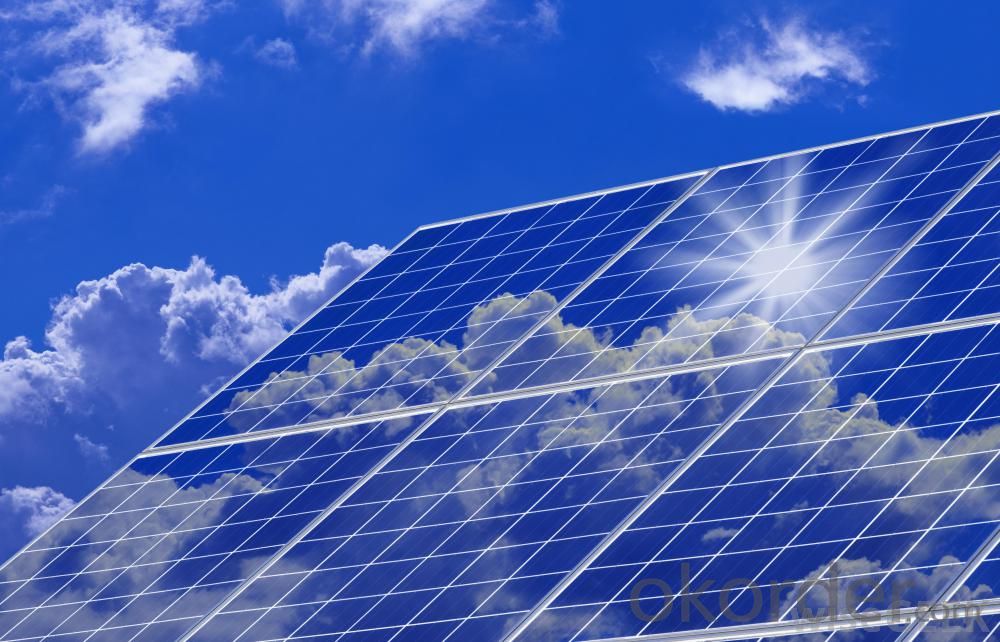
Shipping of 245w-320w Poly Solar Panel
By Sea | Delivery from Shanghai or Ningbo seaport |
By Air | Departure from Shanghai Pudong Airport |
By Express | Post by DHL, EMS, UPS, TNT. |
- Q: What is a solar inverter and what does it do?
- The solar inverter is a crucial element in a solar power system, responsible for transforming the direct current (DC) electricity produced by solar panels into alternating current (AC) electricity, which is the type commonly used in households and businesses. When sunlight strikes the photovoltaic cells, solar panels generate DC electricity by creating an electrical charge. However, AC electricity is the primary power source for most household appliances and the power grid. Consequently, a solar inverter is necessary to convert the DC power from the solar panels into AC power suitable for operating household appliances or feeding back into the grid. In addition to converting electricity, solar inverters fulfill other vital tasks. They regulate voltage and current levels to ensure the produced electricity is safe and compatible with electrical devices. Furthermore, solar inverters incorporate a mechanism known as Maximum Power Point Tracking (MPPT) to optimize the energy output of the solar panels. MPPT adjusts the operating voltage and current of the solar panels to extract the maximum power, even in various weather and shading conditions. Moreover, solar inverters possess built-in safety features to safeguard the system and the electrical grid. They continually monitor the flow of electricity and promptly shut down the system in case of faults, such as short circuits or grid outages, to prevent any potential damage or injuries. In summary, the solar inverter plays an indispensable role in a solar power system, converting the DC electricity generated by solar panels into AC electricity necessary for powering homes, businesses, and the electrical grid. Moreover, it guarantees the secure and efficient operation of the system through voltage and current regulation, energy output optimization, and protection against faults.
- Q: Can solar energy systems be used in cloudy or rainy climates?
- Yes, solar energy systems can still be used in cloudy or rainy climates. While the efficiency of solar panels may be reduced in such conditions, they can still generate electricity. Additionally, advancements in technology and the use of energy storage systems allow for the capture and utilization of solar energy even during periods of limited sunlight.
- Q: Can solar energy systems be used in all regions?
- No, solar energy systems can be used in all regions, but their efficiency and effectiveness may vary depending on factors such as sunlight availability, weather conditions, and geographical location.
- Q: What is the maintenance process for solar panels?
- The maintenance process for solar panels typically involves regular cleaning to remove dirt and debris, checking for any signs of damage or wear, and monitoring the performance of the panels to ensure they are generating the expected amount of electricity. Additionally, it may be necessary to trim nearby trees or vegetation that could potentially shade the panels and reduce their efficiency. Overall, the maintenance process aims to keep the solar panels in optimal condition for maximum energy production.
- Q: Are there any limitations to the use of solar energy systems?
- Yes, there are limitations to the use of solar energy systems. Some of the limitations include the variability of sunlight availability depending on location and weather conditions, the initial high costs of installation and equipment, the need for sufficient space for installation, and the intermittent nature of solar power generation. Additionally, energy storage solutions are required to ensure a continuous power supply during nighttime or cloudy periods. However, advancements in technology and increasing affordability are helping to overcome these limitations and make solar energy systems more viable and widespread.
- Q: Can solar energy systems be used for powering telecommunications towers or antennas?
- Yes, solar energy systems can be used for powering telecommunications towers or antennas. Solar panels can be installed to capture sunlight and convert it into electricity, which can then be used to power the towers or antennas. This helps in providing a sustainable and reliable source of power, especially in remote locations where it may be difficult or costly to connect to the grid. Additionally, solar energy systems can also reduce operating costs and minimize the environmental impact associated with traditional power sources.
- Q: Can solar energy systems be used for powering electric vehicle taxi services?
- Yes, solar energy systems can definitely be used for powering electric vehicle taxi services. Solar energy is a renewable and sustainable source of power that can be harnessed through the installation of solar panels. These panels convert sunlight into electricity, which can then be used to charge the batteries of electric vehicles used for taxi services. By utilizing solar energy systems, taxi operators can greatly reduce their dependence on traditional electricity grids and fossil fuels. This not only helps in reducing greenhouse gas emissions but also lowers the operating costs of running electric vehicle taxi services. Solar energy systems can be installed on the rooftops of taxi service stations or on the premises of charging stations. The excess energy generated during the day can be stored in batteries for later use during the night or on cloudy days when sunlight is scarce. Additionally, solar energy can be used to power the infrastructure required for electric vehicle taxi services. This includes charging stations, dispatch systems, and other operational equipment. By integrating solar power into these systems, taxi service providers can further enhance the sustainability and reduce their carbon footprint. However, it's important to note that the size of the solar energy system should be carefully planned to meet the energy demands of the electric vehicle taxi fleet. Factors such as the number of vehicles, distance traveled, and the availability of sunlight should be considered in determining the appropriate size of the solar energy system. In conclusion, solar energy systems can indeed be used to power electric vehicle taxi services. They offer a sustainable and cost-effective solution that reduces reliance on traditional energy sources and helps in mitigating climate change.
- Q: Can solar energy systems be used in powering government buildings or offices?
- Yes, solar energy systems can be used to power government buildings or offices. In fact, many government buildings around the world have already adopted solar energy systems as a means of reducing their carbon footprint and dependence on traditional energy sources. Solar panels can be installed on rooftops or in open spaces adjacent to government buildings, harnessing sunlight to generate electricity that can be used to power various activities within the buildings. This sustainable approach not only helps in reducing greenhouse gas emissions but also saves money on energy bills in the long run.
- Q: Can solar energy systems be used in areas with high levels of vandalism or theft?
- Yes, solar energy systems can still be used in areas with high levels of vandalism or theft. However, additional security measures such as installing sturdy fences, security cameras, and alarm systems can be implemented to deter potential thieves or vandals and protect the solar panels and equipment. Additionally, community engagement and education programs can be helpful in raising awareness about the benefits of solar energy and discouraging theft or vandalism.
- Q: Are there any limitations to the amount of electricity a solar energy system can generate?
- Yes, there are limitations to the amount of electricity a solar energy system can generate. The primary limitation is the availability of sunlight. Solar panels require direct sunlight to generate electricity, so factors such as weather conditions, geographical location, and time of day can affect the amount of sunlight received. Cloudy or rainy days can significantly reduce the electricity output of a solar energy system. Another limitation is the physical space available for installing solar panels. The size and number of panels that can be installed depend on the available roof or ground space. Limited space can restrict the overall capacity of the system and, consequently, the amount of electricity it can generate. Additionally, the efficiency of solar panels is a determining factor. The efficiency of converting sunlight into electricity varies depending on the type and quality of solar panels used. Higher efficiency panels can generate more electricity than lower efficiency ones. Furthermore, solar energy systems are also subject to degradation over time. Solar panels experience a gradual decrease in efficiency as they age due to factors like exposure to sunlight, temperature fluctuations, and environmental conditions. This degradation can reduce the overall electricity generation capacity of the system. Finally, energy storage is a limitation. Solar energy systems generate electricity during the day, but the demand for electricity often remains constant throughout the day and night. Without an efficient energy storage system, excess electricity generated during the day is wasted if not used immediately. Therefore, the inability to store excess electricity limits the overall amount that can be generated by a solar energy system. In summary, while solar energy systems offer a sustainable and renewable source of electricity, there are limitations to the amount they can generate due to factors such as sunlight availability, physical space, panel efficiency, system degradation, and energy storage capabilities.
Send your message to us
Solar Energy Systems:!!! Hot on Sale!!! Stock 265W Poly Solar Panel USD0.45/W A Grade Good Solar Panel
- Loading Port:
- China main port
- Payment Terms:
- TT OR LC
- Min Order Qty:
- 1 watt
- Supply Capability:
- 10000000 watt/month
OKorder Service Pledge
OKorder Financial Service
Similar products
Hot products
Hot Searches
Related keywords
